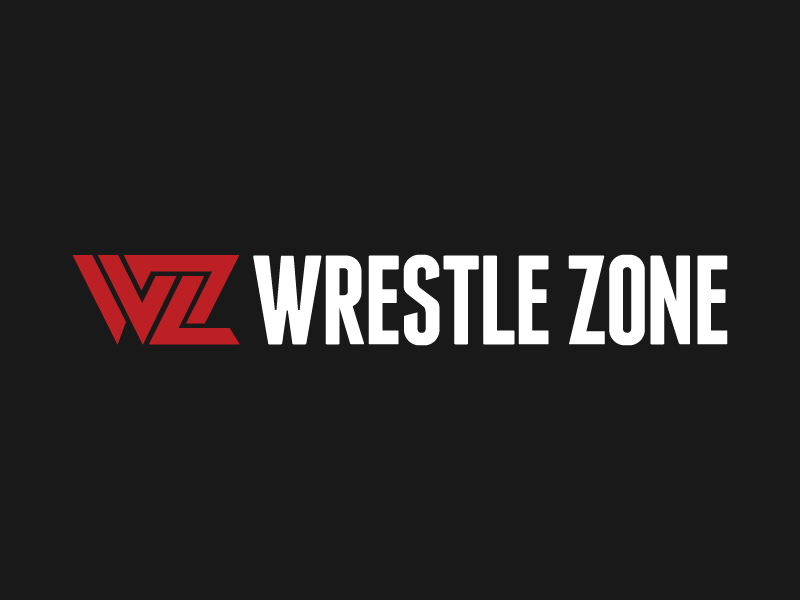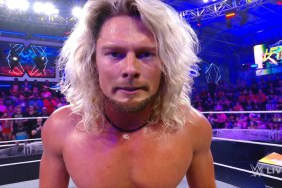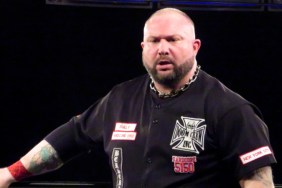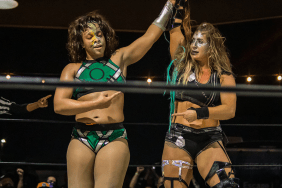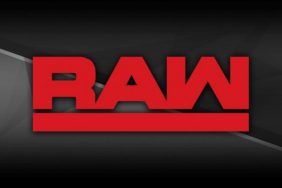These things may seem tangential, but what goes on outside the ring can inform and deepen your appreciation of the in-ring product. Thanks to its ties with Eric Bischoff and Jason Hervey’s television development interests, TNA looks and sounds more professional in 2013 than it ever has before. But they still have a long way to go to catch up to the WWE.
While that previous section seemed rather one-sided, the truth is that the modern-day WWE has become a bit of a victim of its own success. They spend a significant proportion of their airtime on various social marketing and advertising initiatives. They heavily push their Twitter feed, their proprietary apps, and celebrity appearances. (The WWE commentators knocked out two of those categories at once on this week’s Raw, trumpeting the fact that the fourth male lead from Saved by the Bell had Tweeted his reaction to being name-checked on the air.) That same episode of Raw also featured a backstage segment with Zack Ryder, Justin Gabriel, and Fandango that essentially served as a long-form ad for Foot Locker. Obviously, all of this ends up detracting from the in-ring product.
User PRMETFAN points out the difference perfectly. On “the last [Impact] I saw, 2 minutes into it, people were wrestling and bodies were flying in and out of the ring… in the ‘e,’ the show starts with Cena or someone else "talking" for 15-20 minutes before there is even a match.”
I’ll admit to intentionally burying the lede here a bit. Anyone making an argument about watching TNA programming should probably begin by discussing the in-ring product. Not only does TNA spend more time in the ring, the tone of the matches is consistently more serious – with Eric Young on hiatus, comedy matches are fairly rare. As for the skill levels of the participants themselves, this is obviously a matter of personal opinion. If I ranked the top 50 male wrestlers in the United States today, I’d have at least 10 names (AJ Styles, Austin Aries, Bobby Roode, Bully Ray, Chris Sabin, Christopher Daniels, Jeff Hardy, James Storm, Kurt Angle, and Samoa Joe) from TNA. The roster may not be quite as deep as the WWE’s, but there are some incredibly talented athletes that any wrestling fan should be able to enjoy.
There are also a couple of niches that TNA fills better than WWE. If you were a fan of WCW in the 1990s, you may remember the “Cruiserweight Division,” wherein smaller wrestlers competed for a mid-card belt in matches that featured limited storylines, but tons of high-flying, high-velocity action. The WWE has consistently refused to put this belt back into play, but TNA caters to this audience with its X Division matches. While the X Division doesn’t have specific weight limits, most of its matches involve smaller wrestlers who perform a tremendous number of amazingly acrobatic maneuvers. Some forum users derisively refer to such wrestlers as “spot monkeys,” but I don’t think of that as a pejorative. I think every show should include one blatant spot-fest. Those matches are fun, dammit, even if they lack narrative punch.
TNA also has a stronger women’s division. This seems strange on the surface, because TNA has been jettisoning women left and right over the past few months. But even with a heavily depleted roster, the TNA Knockouts still put on consistently better matches than the WWE Divas. I know, I know… women don’t draw. But if you value watching the best women’s wrestlers on national television, then TNA is the way to turn. For the past few years, tag team wrestling was a clear strength of TNA as well. Thankfully, it appears that the WWE has finally begun to strengthen its own tag team division, making this point a push.
